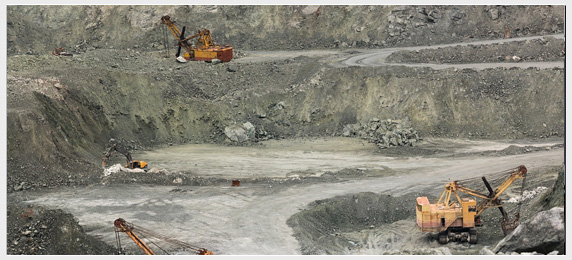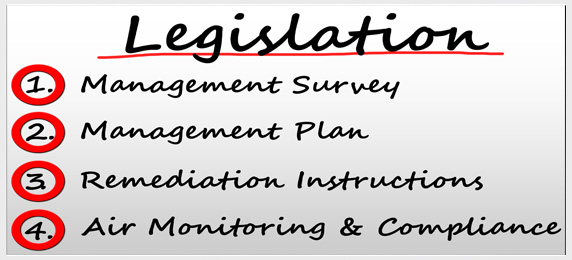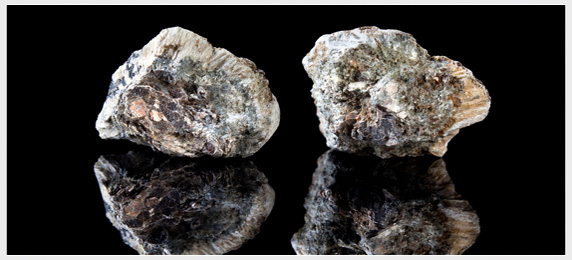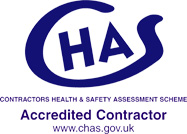Asbestos Exposure at Ground Zero after 9/11
Asbestos Exposure at Ground Zero, New York City after 9-11
On September 11th, 2001, terrorists launched an attack on the World Trade Center in New York City. Thousands of innocent people perished as the towers collapsed rapidly, and the world watched in horror as the brutal reality of the events unfolded on television screens across the globe. As the towers collapsed, they left nothing but debris and rubble, this area was later to be known as "ground zero". Rescue teams were quickly formed of police officers, firefighters and many volunteers, who worked to save as many lives as they could after the attacks.
However, while the rescue operation gathered momentum, few people realised that deadly toxins, like asbestos, were released into the air as the towers collapsed. The twin towers contained a huge quantity of asbestos. The amount used in the initial construction of the buildings was hailed as a major advantage when they were built for the fire retardent properties the asbestos gave the buildings. These poisonous air pollutants have been known to cause lung cancer and the deadly mesothelioma.
Many thousands of people were exposed to the airborne toxins after the attack on the World Trade Center, including those who survived the collapse, first responders like the emergency services, those who lived near the towers, and even the workers who were hired to help clean up the rubble left behind. Additionally, as the debris and damaged buildings found at ground zero burned for several months after the attacks, thousands of heavy metals and carcinogens such as barium, mercury and asbestos, were released into the atmosphere.
Countless people exposed to the pollution are already suffering from symptoms of respiratory illnesses today, years after the attacks, like difficulty breathing, coughing, asthma, and even lung cancer and mesothelioma. As the years pass, more and more people will begin to show signs of this silent killer, as the average latent period for Mesothelioma is approximately 37 years. Therefore, it is believed that many thousands of people will have been infected with cancer and other respiratory diseases.
While still considered to be rare, instances of mesothelioma have undoubtedly increased in number. Asbestos, an organically occurring mineral, is the only known cause of mesothelioma. Once mined and used industrially because of its resistance to heat and flexibility, the health effects of the mineral were not fully understood until the later part of the twentieth century. Because of this, asbestos was used throughout the 1900's in the building and construction materials used in shipyards, and the motor vehicle industry. Additionally, because asbestos is a mineral found on most continents worldwide, very small quantities exist in our atmosphere naturally. However, after the World Trade Center collapsed, the levels of airborne asbestos found in New York City were approximately 93,000 times higher than the typical amount of asbestos found it the air, making the risk of both exposure and illness extremely high.
The New York State Department of Health released a study in the beginning of 2008, stating that in the seven years since the attacks on the World Trade Center, approximately 200 of those people initially exposed to the pollutants at the ground zero site have died. The study also states that at least 55 of these workers were victims of lung cancer, and of all those exposed to the dust and debris after the attacks, at least 62% of people report trouble breathing and other respiratory complications. As of 2012, it has been suggested that there has been a rise of 10,000 cases above the normal expected figures across the New York city area, of cancer related deaths.
While the use of asbestos in buildings has been banned in most countries for many years, it can be difficult to understand why there were so many dangerous toxins released into the air after September 11th. When the New York Port Authority first began building the World Trade Center, the lower 40 floors of the building were originally supposed to be made using 5,000 tons of asbestos fireproofing to help support the buildings. However, as the health hazards associated with asbestos exposure became better known within the trade, builders decided to not to construct the building using the amount of asbestos they initially had planned to use. After the buildings were completely built, more than half the asbestos originally used in the construction was replaced with safer materials. Since the attacks, some have suggested that the twin towers may not have started to collapse as rapidly as they did had there been a larger amount of asbestos used in their construction. However, using a greater quantity of asbestos would only release greater quantities of the asbestos fibres into the air, making illness and disease even more common.
Though a great deal of the asbestos initially used during building the twin towers was removed from the World Trade Center, it was still one of the most common materials used in the erection of the towers. Because of this, the attack caused over 2,000 tons of microscopic asbestos fibres to be released into the air. Workers were advised that the fibres are invisible to the naked eye, and to wear protective equipment which would help keep them safe from exposure. However, many of those who were at ground zero, including volunteers, eye witnesses and the emergency services, were not wearing safety equipment and were exposed to asbestos fibres without their knowledge.
When ingested or inhaled, asbestos fibres become lodged in the mesothelial tissue in the body, or the protective membranes that line the human body's internal organs. While mesothelioma is most commonly found in the lining of the lungs (pleural mesothelioma), it can also affect the lining of the heart (pericardial mesothelioma), and the lining of the abdomen (peritoneal mesothelioma). When exposure to asbestos occurs, the fibres enter the body and act like splinters in the mesothelial membranes. Over time, as scarring and irritation occur, symptoms of respiratory illness will also become present. These symptoms include difficulty breathing, coughing, fever, and chest pain.
However, mesothelioma has an extremely long latency period, meaning that the disease frequently has no symptoms whatsoever for 10-37 years after the initial exposure to asbestos occurred. Even worse, mesothelioma can be difficult to diagnose because of the vagueness of the symptoms, and because patients fail to inform their doctors of exposure to asbestos.
Every year, over 10,000 people in the United States die from complications related to asbestos exposure. Imagine what this figure would be throughout the world. If a person is exposed to dust and debris that contains asbestos, it is extremely important that they visit their doctor as a matter of urgency. They should inform their doctor that they may have been exposed to asbestos. When asbestos-related ailments are caught early, the possibility of treatment is much greater and the disease can be more easily managed.
As of today, both members of the emergency services and workers who helped to remove the debris from ground zero in New York have the option of participating in the World Trade Center Medical Monitoring and Treatment Program. This service is completely confidential and free of charge, this program has been created to help those who were exposed to the dust and rubble to be tested for health problems related to their exposure.
One thing is for certain, the death toll from that fateful day will continue to rise for many years to come.
We provide consultancy services to advise and develop procedures on how best to handle asbestos fuses, personal protection, safe disposal of asbestos and prepare an asbestos monitoring report.
Further Information
If you would like to know more or are interested in a quote we would be happy to help. Phone us on 07730 446 224, email us at info@survey-safe.com or fill in our enquiry form and we will be in touch as soon as possible.
Survey Safe® - 07730 446 224 - info@survey-safe.com
Registered Office: Wagstaffs, Richmond House, Walkern Road, Stevenage, Herts SG1 3QP
Survey Safe® :: 07730 446 224
Survey Safe®
07730 446 224
Areas we cover
Areas we cover in London :: A
Areas we cover in London :: B
Areas we cover in London :: C
Asbestos articles
Asbestos: A possible cure being developed for Mesothelioma
Asbestos: The importance of regular staff medicals
Mesothelioma and Asbestosis: A comparison
86 per cent of school buildings contain asbestos
Workplace exposure limits
Controlling noise at work
Legionella risk
Asbestos re-inspection
Asbestos related products
Magnesite floor screeds
Asbestos in vermiculite
Chrysotile fuse carriers
Asbestos air monitoring
Asbestos cement roofs
Surviving mesothelioma
Cancer deaths from asbestos at all time high
Asbestosis
Asbestos exposure at ground zero after 9/11
Asbestos insurance claims
More asbestos related prosecutions
New asbestos regulations introduced
Asbestos contractor fined
Asbestos is a hidden health hazard in millions of homes
Asbestos exposure
Contractor fined for removing asbestos in an open wheelbarrow
Past and present uses for asbestos
Asbestos filters used in cigarettes
Privacy policy
Website map







 1
1 2
2 3
3 4
4 5
5



